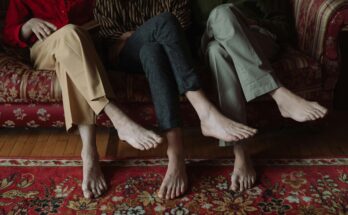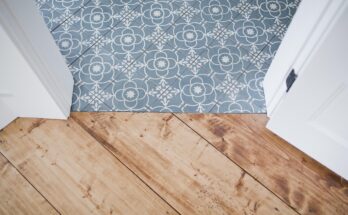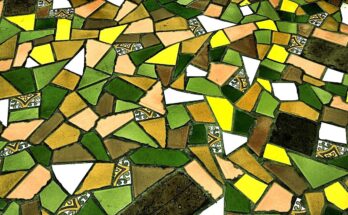ZonaJakarta – Hardwood flooring is one of the most beloved features in homes for a reason. It’s beautiful, strong, timeless, and it fits with almost any style—from vintage charm to modern minimalism. But for all its elegance and toughness, hardwood is still a natural material. That means it responds to daily wear, moisture, temperature shifts, and even sunlight.
The good news? With consistent care and some smart habits, hardwood floors can last decades—often outliving the homeowners themselves. Whether you just moved into a house with brand-new boards or inherited 50-year-old oak that’s seen better days, here’s a thorough guide to hardwood floor maintenance that goes well beyond the basics.
Start with a Strong Routine: Clean Smart and Often
Cleaning might sound obvious, but the way you clean matters just as much as how often. Hardwood flooring doesn’t like too much moisture, and it definitely doesn’t like aggressive scrubbing.
Daily or every few days, sweep with a soft-bristle broom or use a dust mop to catch debris. Dust, sand, and fine grit may be small, but they’re surprisingly abrasive. Left alone, they can dull the floor’s finish like sandpaper.
Vacuuming once a week is also a good habit—but only if you use a vacuum with a hard floor setting or a brush-roll that won’t scratch the surface. Avoid vacuums designed only for carpet, especially ones with stiff beater bars.
In high-traffic areas like the kitchen or entryway, cleaning more frequently will prevent buildup that wears down the finish. And don’t forget under furniture or along baseboards—dust loves corners.
Tackle Spills Fast and Never Let Water Sit
If there’s one golden rule for hardwood: moisture is the enemy. A forgotten puddle under a pet bowl or a slow leak from a plant pot can cause warping, cupping, or permanent staining.
When something spills—whether it’s water, coffee, wine, or juice—blot it up immediately with a dry, absorbent cloth. Don’t rub; just press and lift. For sticky messes, use a slightly damp cloth and then dry the spot thoroughly. Never let water linger.
In kitchens, place a mat in front of the sink and under pet bowls. Just make sure it’s breathable—rubber-backed rugs can trap moisture underneath and damage the wood over time.
Mop Gently and Use the Right Cleaner
Hardwood doesn’t need heavy-duty mopping, and soaking it is a fast track to disaster. Instead, go for light, regular cleanings with the right tools.
Use a microfiber mop and a wood-floor-specific cleaner. These are formulated to clean without leaving a cloudy film or breaking down the protective finish. Avoid vinegar, bleach, ammonia, or multi-surface cleaners unless the label clearly says they’re safe for hardwood. Even homemade solutions that sound harmless can strip the finish if used repeatedly.
Spray the cleaner lightly—either directly onto the mop or in a fine mist across the floor—and mop with the grain. Focus on small sections at a time to avoid over-wetting.
Protect the Surface with Smart Furniture and Layout Choices
Some of the biggest threats to hardwood don’t come from cleaning—they come from everyday living. Chair legs, sofas, bar stools, and even kids’ toys can leave behind deep scratches and dents.
Apply felt pads to the legs of every piece of furniture. Replace them every few months or when they start to wear out. For furniture that gets moved a lot (like dining chairs), consider using area rugs underneath. Not only does this protect the floor, it also absorbs sound and adds a design layer.
When rearranging furniture, never drag it. Lift it or use sliders designed for hardwood. If you’re installing new furniture, do the same—even the initial placement can scratch the floor.
Watch the Air: Humidity and Temperature Matter
Hardwood is sensitive to the environment around it. It expands in high humidity and contracts in dry air. While this natural movement is expected, extreme fluctuations can lead to visible gaps, cracks, or even warping.
Try to keep your indoor humidity level between 35% and 55% year-round. A digital hygrometer can help you monitor this. In the winter, when indoor air gets very dry, a humidifier can help. In hot, humid summers, a dehumidifier or a well-maintained HVAC system does the trick.
This is especially important for homes with wide-plank floors, exotic woods, or floors installed over radiant heating—all of which react more dramatically to environmental changes.
Handle Scratches, Dents, and Wear the Right Way
No floor is invincible. Even with good habits, scratches and scuffs will happen. The key is knowing when to ignore them, when to fix them yourself, and when to call in a professional.
For light surface scratches, wood touch-up pens or wax sticks in a matching shade can work wonders. Apply, buff gently, and they’re barely noticeable.
For deeper scratches or dull patches, a screen and recoat might be all you need. This process involves lightly sanding the top coat and applying a fresh layer of finish. It restores shine and protection without removing the wood itself.
If the damage goes deeper—dents, gouges, or large worn-out areas—refinishing is the next step. This means sanding the floor down to bare wood and applying new stain and finish. It’s more invasive, but it can completely revive old or tired floors.
Most solid hardwood floors can be refinished several times over their lifetime. Engineered hardwood can usually handle one or two refinishes, depending on the thickness of the top layer.
Don’t Forget Sunlight: It Changes Everything
Sunlight is beautiful on wood, but it can also cause fading or uneven color changes over time. Some species—like cherry or walnut—darken when exposed to light, while others may bleach out.
Rotate rugs and furniture every few months so your floor tones change evenly. Use UV-filtering window treatments if your floors are in direct sun for long hours each day. If fading does occur, refinishing can restore uniform color, but prevention is easier and cheaper.
Annual and Seasonal Check-Ins Make a Difference
Each season brings different challenges for hardwood. In spring and summer, it’s the humidity. In fall and winter, it’s dry air, tracked-in grit, and temperature swings. Once a season, do a full walk-through:
– Check for gaps or swelling between planks
– Look for water stains or discoloration
– Test furniture pads and replace worn ones
– Deep clean high-traffic areas
– Assess whether a recoat or refinish might be due
– Keeping tabs like this avoids surprises and makes it easier to plan ahead.
Final Word: A Little Effort, A Lot of Return
Hardwood floors are more than just a design choice—they’re a living surface that responds to how you treat it. Unlike tile or laminate, they grow more beautiful with age, gaining character with every year. But that only happens if you take care of them.
So sweep often, mop smart, mind the moisture, and don’t wait too long to fix what’s wearing down. The payoff? Floors that not only look good today but still shine 20, 30, or even 50 years from now.
In a world of quick fixes and disposable design, hardwood offers the rare gift of permanence—if you’re willing to meet it halfway. (*)




